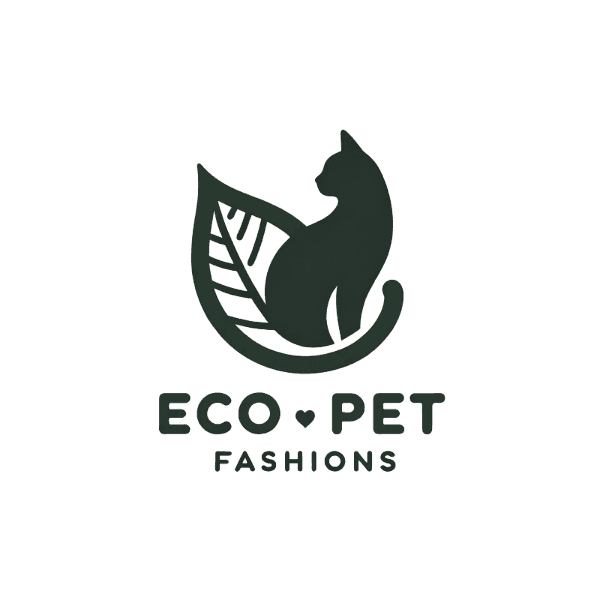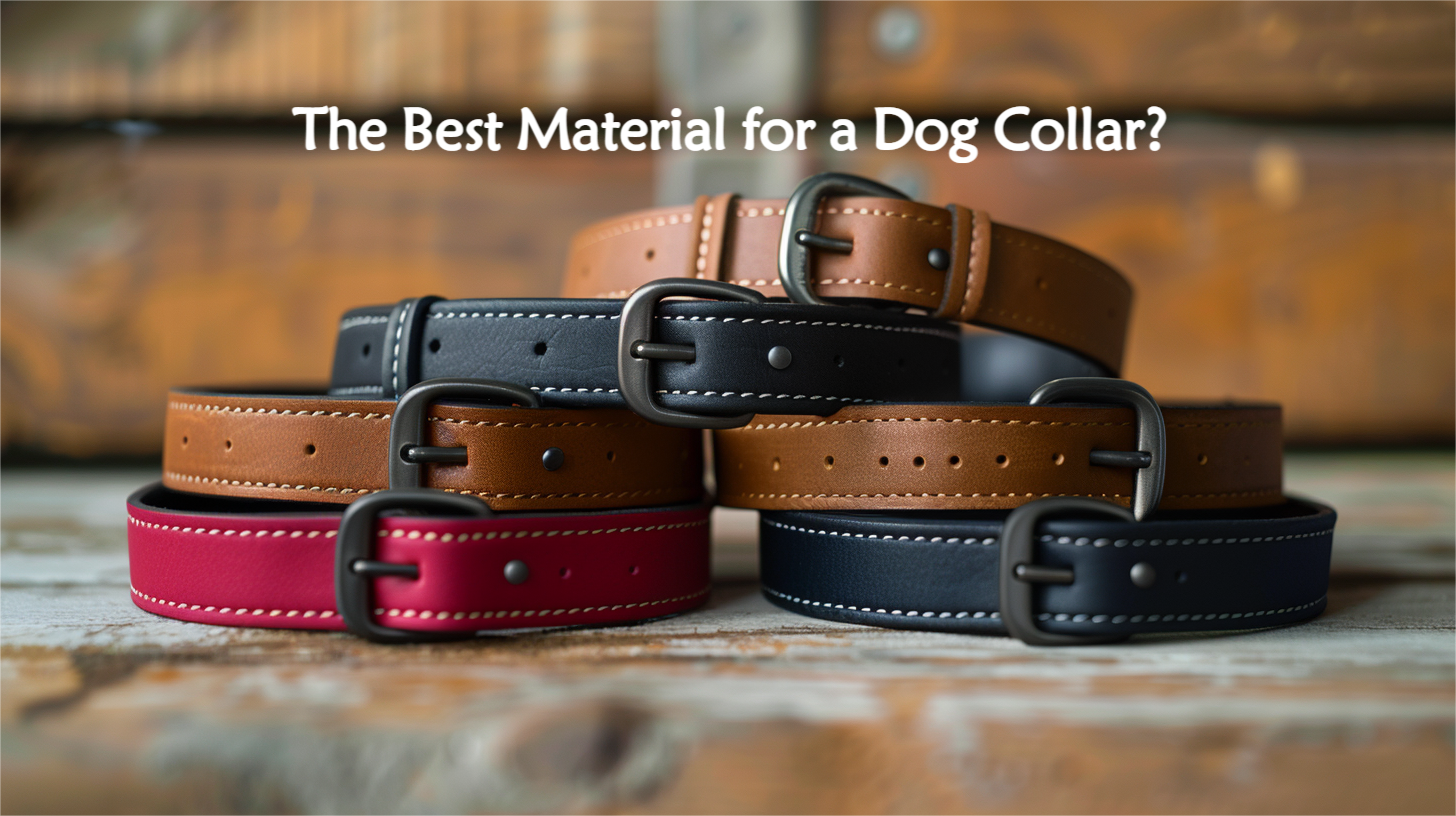For dog owners and B2B procurement specialists alike, choosing the right dog collar is more than a matter of aesthetics. It’s about ensuring the safety, comfort, and well-being of our furry companions or selecting a product that will meet the high standards of customers. With a myriad of materials available—from leather to neoprene—the decision can be daunting. How do you determine which material best suits your dog’s needs or fulfills your business requirements for quality, durability, and style?
Imagine investing in a bulk order of dog collars, only to find they wear out quickly, cause discomfort to the dogs, or don’t meet the durability claims. As a pet owner, it’s frustrating to see your dog in discomfort. As a business, it’s detrimental to your reputation and bottom line. Choosing the wrong material can lead to unhappy pets and dissatisfied customers, resulting in wasted time and resources, and potentially even returns and refunds. The stakes are high, and making an informed decision is crucial to avoid these pitfalls.
To make the best choice, whether you’re a pet owner or a B2B buyer, it’s essential to understand the pros and cons of the most popular dog collar materials. Let’s explore the benefits and drawbacks of leather, biothane, nylon/polyester, and neoprene, and discover which material will meet your specific needs.
Exploring the Best Dog Collar Materials
When it comes to selecting the best material for a dog collar, it’s important to understand the pros and cons of each option. Let’s delve into the most popular materials: leather, biothane, nylon/polyester, and neoprene.
Leather
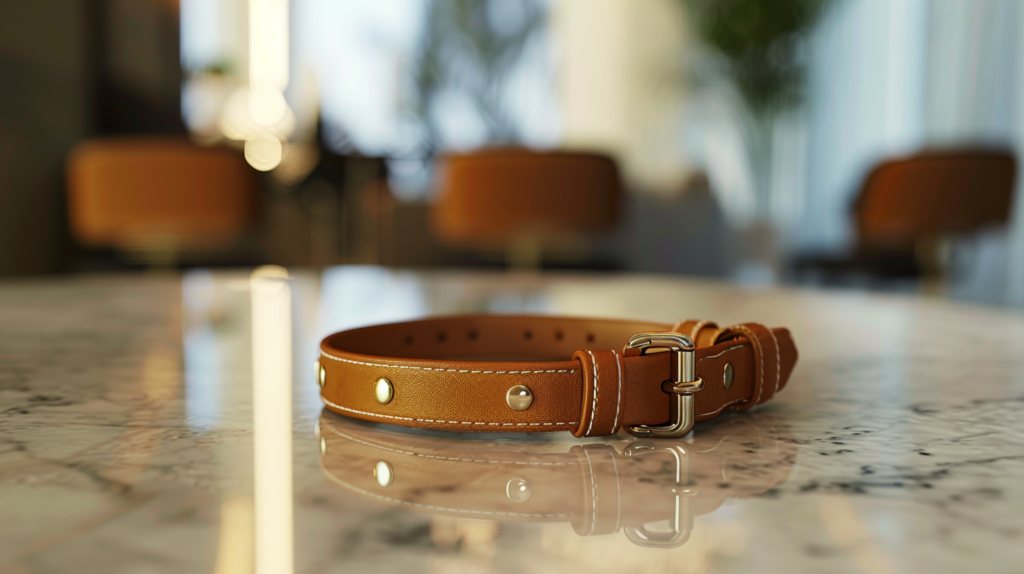
Leather collars are a timeless and popular choice due to their durability and classic look. As leather ages, it becomes softer and more comfortable for your dog while maintaining its strength. Leather is also waterproof, making it suitable for dogs that love to swim. However, leather collars can be more expensive and might not be the best option for dogs with sensitive skin.
Biothane
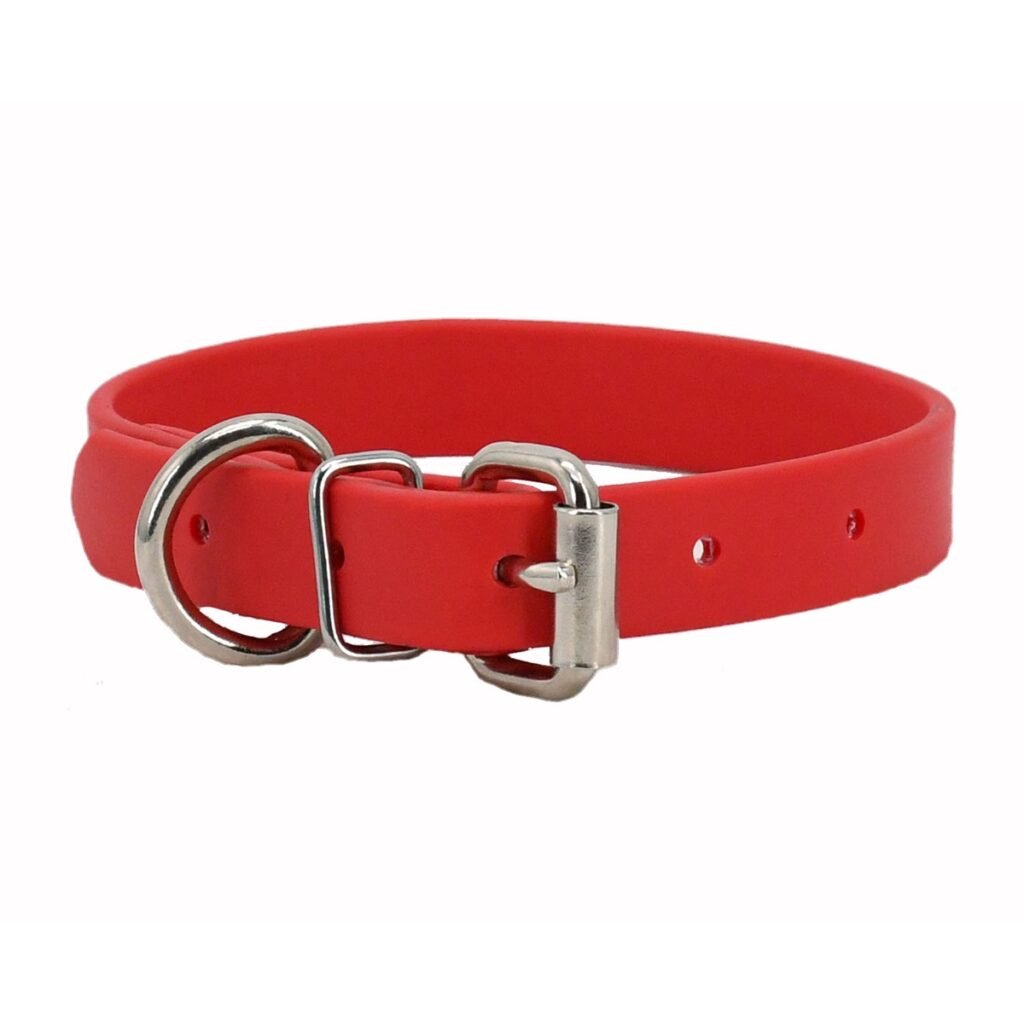
Biothane is an excellent alternative to leather, known for its waterproof and easy-to-clean properties. This material is durable, flexible, and odor-resistant. While biothane collars are practical and long-lasting, some owners might find their appearance too synthetic.
Nylon/Polyester
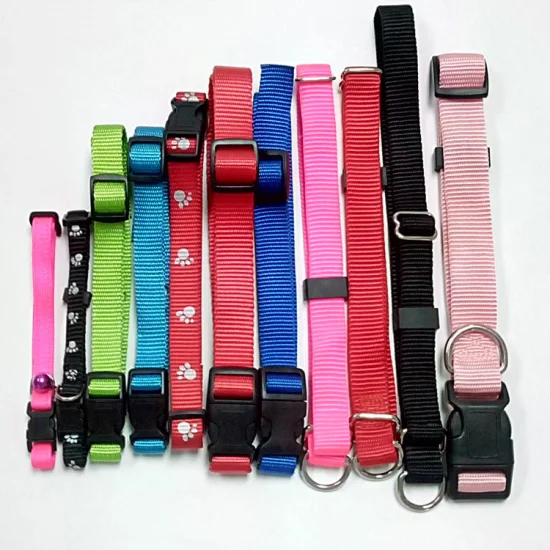
Nylon and polyester collars are lightweight, comfortable, and available in a variety of colors and patterns, making them a fashionable choice. They are particularly popular for puppies and small dogs. However, these materials can absorb odors and may not be as durable as leather or biothane collars, requiring more frequent replacements.
Neoprene

Neoprene collars are water-resistant, quick-drying, and soft, making them ideal for active dogs and those with sensitive skin. Neoprene is especially beneficial for dogs with long fur, as it prevents matting and irritation. While neoprene collars are functional, they might not offer the same stylish appeal as leather or nylon options.
Rope

Rope collars, often made from natural cotton, are durable, comfortable, and eco-friendly. They are a great choice for dogs with thin fur and provide a secure grip for owners. Rope collars are biodegradable, making them a sustainable option, but they might lack the aesthetic variety found in other materials.
Detailed Analysis of Each Material
To make an informed decision, it’s essential to understand the specific characteristics and benefits of each material in detail.
Leather Collars
Leather is often considered the gold standard for dog collars due to its durability and timeless appeal. Here are some detailed advantages and disadvantages:
Advantages:
- Durability: Leather is incredibly durable and can withstand the wear and tear of daily use. High-quality leather collars can last for years, making them a cost-effective option in the long run.
- Comfort: Leather becomes softer and more comfortable with use. It molds to the shape of your dog’s neck, providing a snug and comfortable fit.
- Aesthetic Appeal: Leather collars have a classic and stylish look. They are available in various colors and designs, allowing you to choose a collar that suits your dog’s personality.
- Waterproof: Leather collars are naturally water-resistant, making them suitable for dogs that love to swim or play in the water. However, prolonged exposure to water should be avoided to maintain the leather’s quality.
Disadvantages:
- Cost: Leather collars are generally more expensive than other materials. The initial investment can be higher, but the longevity of the collar often justifies the cost.
- Maintenance: Leather requires regular maintenance to keep it in good condition. It needs to be cleaned and conditioned periodically to prevent it from drying out and cracking.
- Sensitivity: Some dogs may have sensitive skin that reacts to leather. In such cases, alternative materials like biothane or neoprene may be more suitable.
Biothane Collars
Biothane is a synthetic material that has gained popularity as an alternative to leather. Here are some detailed pros and cons:
Advantages:
- Waterproof: Biothane is completely waterproof, making it an excellent choice for dogs that enjoy water activities. It doesn’t absorb moisture, preventing odors and bacteria buildup.
- Durability: Biothane is highly durable and resistant to wear and tear. It can withstand rough handling and extreme weather conditions, ensuring long-lasting performance.
- Easy to Clean: Biothane collars are easy to clean with just soap and water. They don’t require special maintenance, making them a convenient option for busy dog owners.
- Flexibility: Biothane is flexible and comfortable for dogs to wear. It doesn’t become stiff or brittle over time, ensuring a comfortable fit.
Disadvantages:
- Appearance: Some dog owners may find the appearance of biothane collars less appealing than leather. Biothane has a synthetic look that may not match the aesthetic preferences of all pet owners.
- Cost: While not as expensive as leather, biothane collars can still be pricier than nylon or polyester options.
Nylon/Polyester Collars
Nylon and polyester are popular choices for dog collars due to their affordability and variety. Here are some detailed pros and cons:
Advantages:
- Affordability: Nylon and polyester collars are budget-friendly options. They are widely available and come in various price ranges, making them accessible to all dog owners.
- Variety: These collars are available in a wide range of colors, patterns, and designs. You can easily find a collar that matches your dog’s personality and your style preferences.
- Lightweight: Nylon and polyester collars are lightweight and comfortable for dogs to wear. They don’t add unnecessary weight to your dog’s neck, ensuring comfort during daily activities.
- Quick-Drying: These materials dry quickly, making them suitable for dogs that enjoy water activities. They are also resistant to mildew and mold.
Disadvantages:
- Durability: Nylon and polyester collars are not as durable as leather or biothane. They may fray or wear out over time, especially if your dog is very active or tends to chew on their collar.
- Odor Absorption: These materials can absorb odors, requiring more frequent cleaning. They may also retain smells even after washing, which can be a drawback for some pet owners.
Neoprene Collars
Neoprene is a soft and water-resistant material that is often used for dog collars. Here are some detailed pros and cons:
Advantages:
- Water-Resistant: Neoprene is water-resistant and quick-drying, making it ideal for dogs that love water activities. It doesn’t absorb moisture, preventing odors and bacteria buildup.
- Soft and Comfortable: Neoprene is soft and gentle on your dog’s skin, making it suitable for dogs with sensitive skin or allergies. It provides a comfortable fit and reduces the risk of irritation.
- Durability: Neoprene collars are durable and can withstand daily wear and tear. They are resistant to stretching and tearing, ensuring long-lasting performance.
- Versatility: Neoprene collars are available in various colors and designs, allowing you to choose a collar that suits your dog’s personality and your style preferences.
Disadvantages:
- Appearance: Some dog owners may find the appearance of neoprene collars less appealing than leather or nylon. Neoprene has a utilitarian look that may not match the aesthetic preferences of all pet owners.
- Cost: Neoprene collars can be more expensive than nylon or polyester options. However, their durability and comfort often justify the higher price.
Rope Collars
Rope collars, often made from natural cotton, are durable, comfortable, and eco-friendly. Here are some detailed pros and cons:
Advantages:
- Durability: Rope collars are durable and can withstand daily wear and tear. They are strong and secure, providing a reliable option for controlling your dog.
- Comfort: Rope collars are soft and comfortable for dogs to wear. They don’t cause irritation or discomfort, making them suitable for dogs with sensitive skin.
- Eco-Friendly: Rope collars are often made from natural cotton, making them biodegradable and environmentally friendly. They are a sustainable option for eco-conscious pet owners.
- Aesthetic Appeal: Rope collars have a rustic and natural look that many pet owners find appealing. They are available in various colors and patterns, allowing you to choose a collar that matches your dog’s personality.
Disadvantages:
- Maintenance: Rope collars require regular cleaning to prevent dirt and bacteria buildup. They can become dirty and smelly over time, requiring more frequent maintenance.
- Appearance: While some pet owners find the appearance of rope collars appealing, others may prefer the sleek and polished look of leather or nylon collars.
Factors to Consider When Choosing a Dog Collar Material
When selecting the right collar material, consider the following factors:
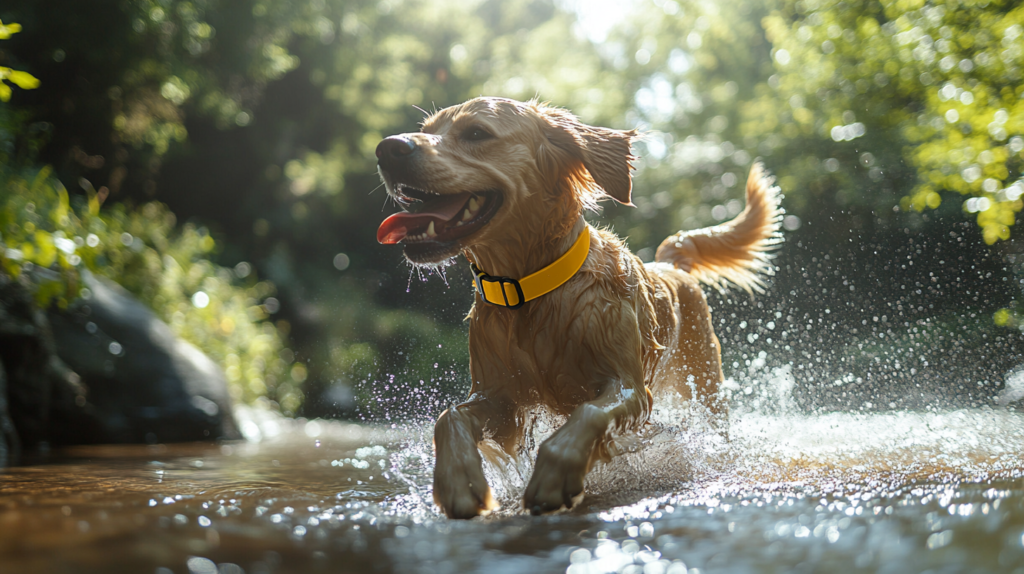
Activity Level
*For dogs that are frequently active and love water, materials like biothane or neoprene are ideal due to their durability and waterproof nature.
Skin Sensitivity
Dogs with sensitive skin may benefit from softer materials like neoprene or well-conditioned leather to prevent irritation.
Durability and Maintenance
Leather and biothane collars are known for their durability and ease of cleaning, making them suitable for long-term use. Nylon and polyester collars might need more frequent replacements.
Style Preferences
If you prioritize aesthetics, nylon and polyester collars offer a wide range of colors and patterns, allowing for personalization and style.
Budget
While leather collars may have a higher upfront cost, their longevity makes them a cost-effective choice over time. Nylon and polyester are budget-friendly but may require more frequent replacements.
Complete Guide to Import Pet Supplies from China
If you are planning to import pet products from China, this article provides a detailed guide that you will find extremely helpful. As a leading manufacturer specializing in high-quality, customizable pet accessories, we aim to ensure our clients receive the best products to meet their needs. Our expertise spans a range of materials and designs, ensuring that you find the perfect fit for your business. Please feel free to browse through our comprehensive guide, and we hope it assists you in making informed decisions for your pet product imports.

Conclusion: Balancing Needs and Preferences
The best material for a dog collar ultimately depends on balancing your dog’s specific needs with your preferences. Many owners find it beneficial to have multiple collars for different situations, such as a durable leather collar for daily use, a waterproof biothane collar for outdoor adventures, and a stylish nylon collar for special occasions.
By understanding the advantages and disadvantages of each material, you can make an informed decision that ensures your dog’s comfort, safety, and style. Whether you choose the classic durability of leather, the practical robustness of biothane, the comfort and variety of nylon/polyester, or the soft resilience of neoprene, selecting the right collar will enhance both your and your dog’s experiences.

